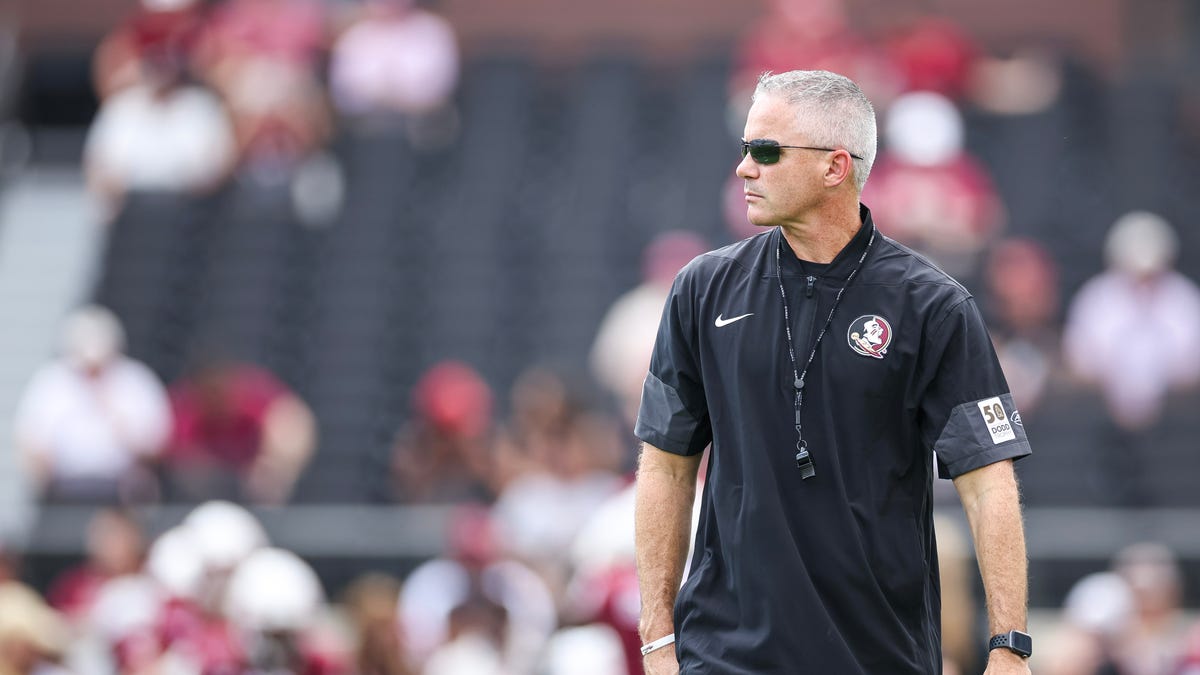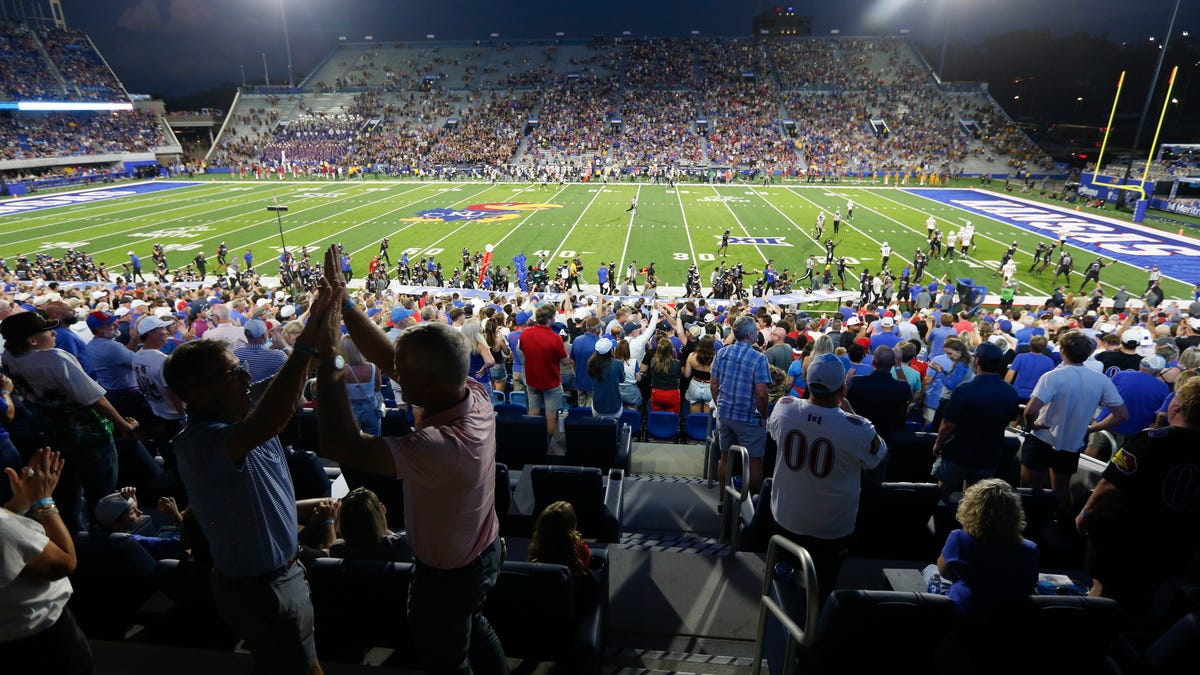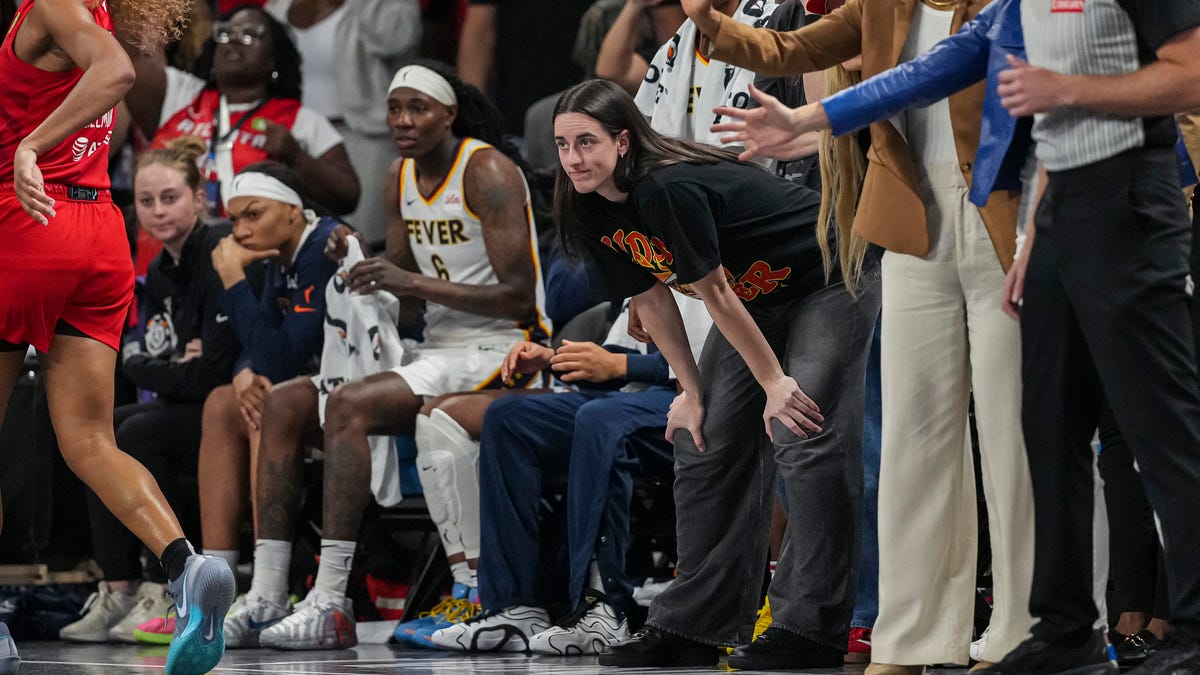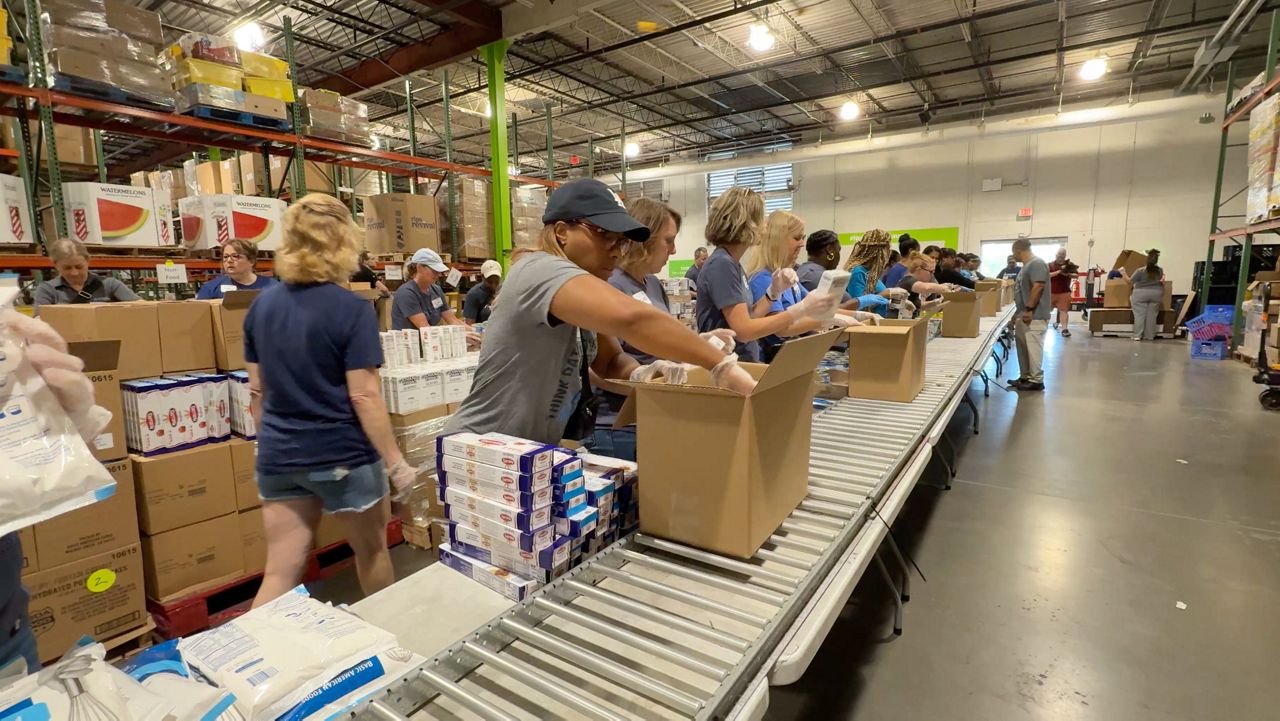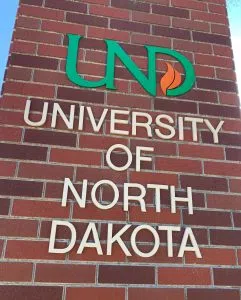Nevada
Neal runs for 3 TDs, Hinshaw Jr. adds runs for another to help Kansas beat Nevada 31-24

RENO, Nev. (AP) — Devin Neal and Daniel Hishaw Jr. combined for 137 rushing yards and four touchdowns, Jalon Daniels threw for 298 yards, and Kansas pulled away from Nevada in the fourth quarter for a 31-24 victory Saturday night at Mackay Stadium.
The game was tied at 24-all when Daniels went 4-for-4 for 55 yards, leading to Neal’s third touchdown on a 3-yard run and a 31-24 lead with 6:20 left to play.
Nevada was not able to cross midfield on its final two possessions.
“We found a way,” Jayhawks coach Lance Leipold said. “We did not play our sharpest. We had too many penalties.
“But at the same time, I’m proud of our team for persevering and finding a way. In the end, we found a way to get a big stop and come away here with a win. And road wins aren’t easy.”
The Jayhawks (3-0) were a 28-point favorite at Nevada sports books.
The Wolf Pack (0-3) was looking to end the nation’s longest losing streak. The now 13-game skid under second-year coach Ken Wilson is also the longest in program history.
“It was a great effort by those men in that locker room,” Wilson said. “They came back after (a 33-6 loss to Idaho) last week and they battled their asses off all night. They never backed down.”
Quarterback Brendon Lewis led Nevada with 113 passing yards and two rushing touchdowns.
“Credit Coach Wilson and Nevada for coming ready to play and playing hard and playing downhill and physical all day long,” Leipold said.
Leipold was especially pleased with Daniels’ poise down the stretch.
“We struggled a little bit in pass protection, and he was scrambling a little bit,” he said. “But 21-for-27, that’s a pretty darn good day.”
Safety Jenny Logan had a team-high nine tackles, 2 1/2 for loss, to lead the Jayhawks.
Neither team could muster much offense in the first half, but the second half was a shootout. They combined for 20 points on 247 yards in the first half but had 35 points on 461 yards in the second.
The teams used long pass plays to trade three touchdowns in a span of 2 minutes, 7 seconds late in the third quarter. Daniels connected with tight end Mason Fairchild on a 29-yard pass to the Nevada 1.
Two plays after Hishaw’s subsequent TD, Nevada’s Dalevon Campbell hauled in a 53-yard pass from Lewis to set up a short TD run by Sean Dollars to tie it at 17.
On the next play, Daniels and Neal connected on a 59-yard pass to the Nevada 1, leading to a Neal TD and a 24-17 lead that Kansas took into the fourth quarter.
Lewis’ second TD run, from 2 yards out, with 10:37 to play knotted the score at 24 and set up Daniels’ heroics down the stretch.
The Jayhawks embarked on a nine-play, 75-yard touchdown drive on the game’s first possession, moving the ball with ease and scoring on Neal’s 3-yard run. But the Wolf Pack defense stiffened – with the help of five Kansas penalties – and allowed just 75 yards on 23 plays the rest of the half.
Dollars scored on a 3-yard run in the final minute and the teams went into the locker room tied at 10-10 despite Nevada having just 97 total yards of offense.
BIG PICTURE
The Jayhawks opened with three consecutive wins for the second straight season. Kansas stretched it to 5-0 in 2022 before losing seven of its final eight games. This marks KU’s first back-to-back 3-0 starts since 1991-92 under head coach Glen Mason.
UP NEXT
Kansas: Will host BYU (3-0) on Saturday in what will be the Cougars’ first Big 12 Conference game. BYU had been independent the previous 12 years before joining the Big 12 this season.
Nevada: Travels to San Marcos, Texas to take on the Sun Belt’s Texas State Bobcats (2-1) on Saturday. Texas State is the last team Nevada defeated, 38-14, on Sept. 3, 2022, in Reno.
___
AP college football: https://apnews.com/hub/college-football and https://apnews.com/hub/ap-top-25-college-football-poll

Nevada
Nevada sheds 7,100 construction jobs amid labor shortage: report

LAS VEGAS (FOX5) — According to data from the Associated General Contractors of America (AGC), Nevada shed 7,100 construction jobs, a total of 6.4% of the workforce, in the last 12 months. It represents the percentage loss in the county.
When compared month to month, the Silver State saw similar drops, with 4,400 jobs lost from July to August, a 4.1% decline. Nationally, association officials noted a difficulty in filling open positions, with 92% of firms reporting having a hard time finding workers. 45% of firms delayed projects due to labor shortages.
“Most firms are struggling to find enough workers to hire amid persistent labor shortages,” said Ken Simonson, chief economist for the AGC. “These labor shortages are the number one cause for delayed construction projects, according to our recent survey.”
“The construction officials urged federal leaders to boost funding for construction education and training and create more lawful pathways for people to enter the country to work in construction,” the report said.
The report follows data from real estate website Redfin, which indicates that Las Vegas is the fastest-cooling U.S. housing market, with home sales down 10.2% year over year.
Copyright 2025 KVVU. All rights reserved.
Nevada
Country star cancels final tour stop over safety concerns

Country music star Bailey Zimmerman was forced to cancel the final show of his “New To Country Tour” because of safety concerns at the Rio Vista Outdoor Amphitheater in Laughlin, Nevada, Parade reports.
In an Instagram post featuring a simple black backdrop, Zimmerman expressed his disappointment about the cancellation.
“This is something an artist never wants to tell their fans,” he wrote on Saturday. “I am beyond disappointed, and I’m sorry, but we have to cancel our show tonight in Laughlin, NV.”
The cancellation stemmed from what Zimmerman described as “unforeseen local production limitations” and an unsafe stage. He emphasized that the decision had nothing to do with him or his team, stating they arrived “fully prepared to end the New To Country Tour the right way.”
“The safety of y’all, my band, and my crew is the most important thing to me, and I just can’t put y’all at risk,” Zimmerman explained in his post.
He added, “I really hate disappointing you all, and I hate ending the tour this way, but like I said, it’s what I have to do.”
Fans who purchased tickets to the Laughlin concert will receive full refunds to their original method of payment, with payments expected to appear within 14-21 days. Ticket holders with questions are advised to contact their ticket providers directly.
Despite the disappointing conclusion to his current tour, Zimmerman has already announced his next venture. The “Different Night Same Rodeo Tour” is scheduled to begin on Feb. 19, and it will cover more than 30 cities across the United States, including Knoxville, Boston, Atlanta, Fort Worth, Nashville and Toronto.
The tour is set to conclude June 20.
The “New To Country Tour,” which began on June 6 in Indianapolis, featured special guests Dylan Marlowe and Drew Baldridge.
Fans responded supportively to Zimmerman’s announcement, with one commenting, “I’m so sorry, BZ! I know you care soooo much about your fans and team. This must have been such a hard choice.”
Another added, “Sad, but you and your crew need to be safe.”
This story was written with the assistance og AI.
If you purchase a product or register for an account through a link on our site, we may receive compensation. By using this site, you consent to our User Agreement and agree that your clicks, interactions, and personal information may be collected, recorded, and/or stored by us and social media and other third-party partners in accordance with our Privacy Policy.
Nevada
Nevada protects consumers from utility shutoffs in extreme heat. Advocates want more. – The Nevada Independent

As electricity costs grow steeper and Nevada summers grow deadlier, advocates are sounding alarms about the risks to low-income people who can’t afford consistent air conditioning in dangerous temperatures.
Between May and August 2025, there were at least 114 heat-related deaths in Clark County alone, according to the county coroner’s office.
This summer’s scourge of heat-related death and illness mirrors a nationwide trend. Recent studies show that extreme summertime heat is now the leading cause of weather-related deaths, according to the U.S. Environmental Protection Agency (EPA).
In 2023, the death certificates of more than 2,300 people who died in the summer mention the effects of excessive heat, the highest number in 45 years of records, according to an Associated Press analysis of Centers for Disease Control and Prevention data. Three-quarters of those deaths occurred in five states: Arizona, Texas, Florida, Louisiana and Nevada.
According to the nonprofit organization Climate Central, Las Vegas and Reno are the two fastest-warming cities nationwide. Las Vegas’ environment puts residents at particular danger from extreme heat. The city’s sprawl has created a “heat island,” where heat-absorbing roads and buildings further increase temperatures.
Yanci Hill works to protect her fellow Nevadans from extreme heat as part of the Latin-focused environmental group Chispa Nevada, which advocates for less expensive utility costs and more transparent utility policies for Nevadans. She experienced extreme heat herself in July 2024, when the central air-conditioning unit in her one-story home in Henderson broke.
Hill, her husband and their 18-year-old daughter spent five days virtually trapped inside their home. “It was 113 degrees outside,” she explained, “and 102 degrees inside. We were sleeping with cold compresses on our foreheads and ice packs under our pillows.” The heat got so bad, Hill said, one of the family cats fell ill with liver disease.
Hill said one of her friends once had her utilities shut off because she was a few dollars short on her bill.
The federal government has long recognized the need to ensure Americans can access their utilities in extreme weather. Since 1980, the federal Low Income Home Energy Assistance Program (LIHEAP) has provided funds to state governments to subsidize residents who have trouble affording their heating or cooling bills. But according to Mark Wolfe, executive director of the National Energy Assistance Directors Association (NEADA), which represents the program’s state managers, roughly 85 percent of the program’s resources are used for heating in the winter. That leaves less support available nationally for households requiring cooling.
“How do we protect vulnerable households both during periods of extreme heat and extreme cold?” asked Wolfe. “The rules haven’t caught up.”
Nationally, the cost of electricity has risen at twice the pace of the average cost of living, exacerbating this problem. According to NEADA, almost one in every five of the poorest families lacks consistent access to cooling.
To supplement the LIHEAP program’s efforts and keep utilities operating in sweltering heat, many states bar utility companies from disconnecting services in certain temperatures or during certain months.
Nevada is one of 20 states that offer protections from utility shutoffs during extreme heat and one of 41 states that offer the same protections during extreme cold. According to the Public Utilities Commission of Nevada (PUCN), utilities cannot be disconnected when the temperature is above 105 degrees. If customers are elderly or disabled, that threshold drops to 95 degrees. Utility disconnections also must be delayed for 30 days if a resident is experiencing a medical emergency.
But Olivia Tanager of the Sierra Club’s Toiyabe Chapter, one of Nevada’s largest environmental organizations, said she believes the state must do more.
Some states have their temperature-based protections kick in at a lower threshold. Arizona, for instance, prevents utilities from being shut off during summer months or whenever it hits 95 degrees.
“I think a lower threshold — in the 92 or 95 degree area — would be much more reasonable for Nevada, because we also know, especially in Southern Nevada, the heat disparities between different neighborhoods are very extreme,” said Tanager.
In this year’s legislative session, a bill that went even further — prohibiting utility cutoffs from May 1 to Oct. 31 — died without a hearing.
Along with more expansive time- or temperature-based protections, environmental and consumer advocates have encouraged the state to provide more robust financial assistance to low-income families. Nevada is one of 26 states plus Washington, D.C., that offer assistance with summer energy bills, partnering with the federally funded LIHEAP to provide support to consumers through the Energy Assistance Program (EAP). NV Energy, which controls the majority of utilities in Southern Nevada, also oversees the Special Assistance Fund for Energy (SAFE) program, which is intended to supplement state and federal assistance.
But Nevada is not one of the 21 states with explicit policies protecting low-income families from utility disconnections during summer months. Such disconnections are only barred if the temperature is above 105 degrees. But even if families keep their utilities on in such intense heat, they must foot the bill. A public utilities commission spokesperson told The Nevada Independent in a statement that Nevada places “a moratorium on disconnections during periods of extreme temperatures; the regulations do not exempt customers from paying utility bills incurred during extreme temperature periods.”
Residents are only allowed to receive EAP funds once annually, which Tanager says further prevents the program from becoming a long-term solution to an affordability crisis.
“While we do have resources, and while we appreciate those resources existing, we know that it’s not working for everybody,” she said.
Tanager’s Sierra Club and Hill’s Chispa Nevada are part of the Nevada Environmental Justice Coalition, which sent a group of activists to the state legislative session in April 2025 to advocate for greater transparency and affordability concerning utilities. They petitioned successfully for the passage of AB442, which requires the Public Utilities Commission to report quarterly data on when and where utility services are being disconnected, and AB452, which requires greater transparency around the setting of utility rates.
“AB452 was really about consumer protections — how do we know what we’re paying for as energy consumers?” said Assm. Tracy Brown-May, who sponsored the bill. “So that we know when [Nevada utility companies] purchase that natural gas, the cost of it is not all immediately passed onto the rate payer, with no data or information as to why.”
In February 2025, NV Energy proposed a revenue increase that would spike rates up to 9 percent, a move they justified by pointing to last year’s expensive heat waves. The Public Utilities Commission, forced to delay August public hearings on the matter due to the government’s recent cyberattack, is expected to vote on the proposed rate hike next week.
Tanager, for her part, said she hopes that the commission votes against the hike.
“The utility companies are bringing in record profits year-after-year, but Nevadans continue to be squeezed more and more,” she stated. “Several percentage points of people in each ZIP code are unable to pay their utility bill each year, which is, in my opinion, just disgusting.”
Cora Lewis of The Associated Press contributed to this article.
-

 World1 week ago
World1 week agoTrump and Zelenskyy to meet as Poland pressures NATO on no fly zone over Ukraine
-

 Technology1 week ago
Technology1 week agoNew Evite phishing scam uses emotional event invitations to target victims
-

 Health1 week ago
Health1 week agoDiabetes risk quadruples with use of popular natural remedy, study finds
-

 Politics1 week ago
Politics1 week agoHouse plans Thursday vote on government funding bill to extend spending through November
-

 Business1 week ago
Business1 week agoDisney, Universal and Warner Bros. Discovery sue Chinese AI firm as Hollywood's copyright battles spread
-

 Health1 week ago
Health1 week agoWho Makes Vaccine Policy Decisions in RFK Jr.’s Health Department?
-

 Finance3 days ago
Finance3 days agoReimagining Finance: Derek Kudsee on Coda’s AI-Powered Future
-

 Lifestyle1 week ago
Lifestyle1 week agoBobbi Brown doesn’t listen to men in suits about makeup : Wild Card with Rachel Martin
